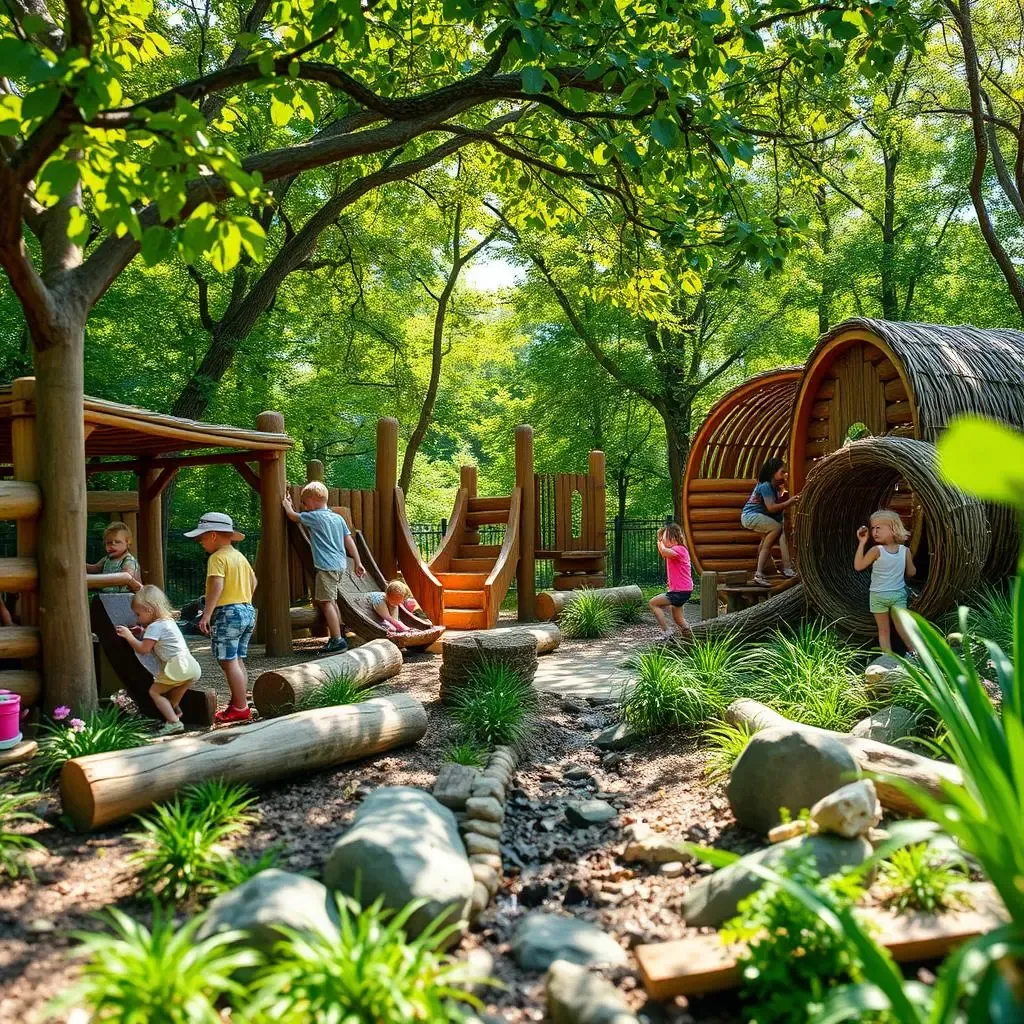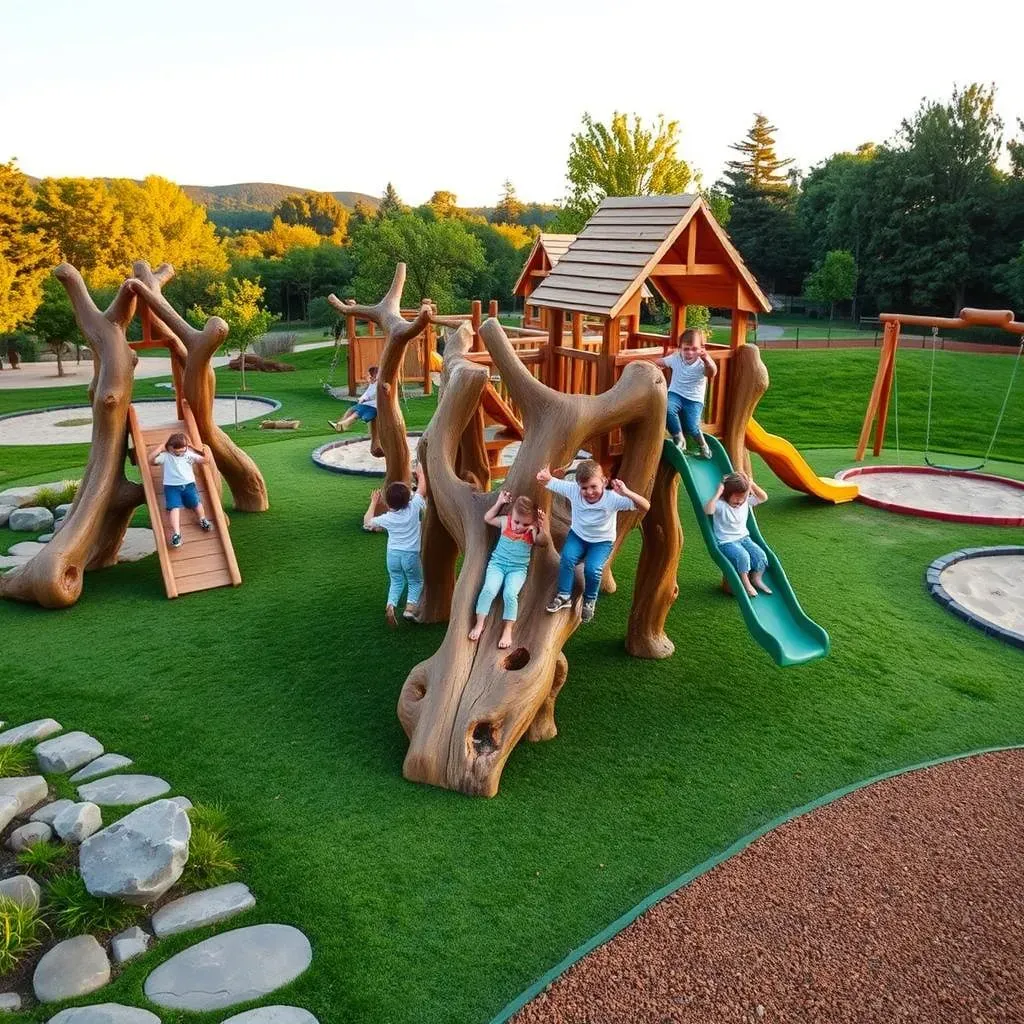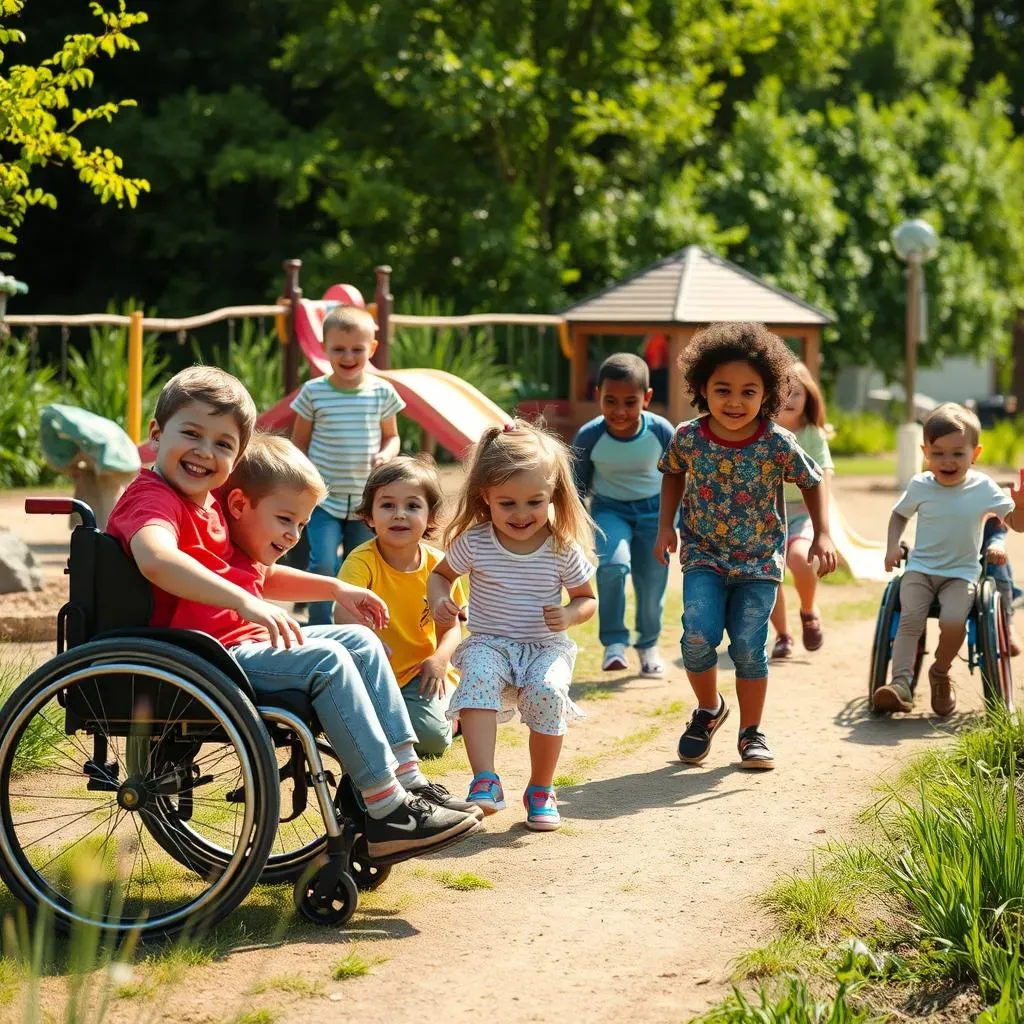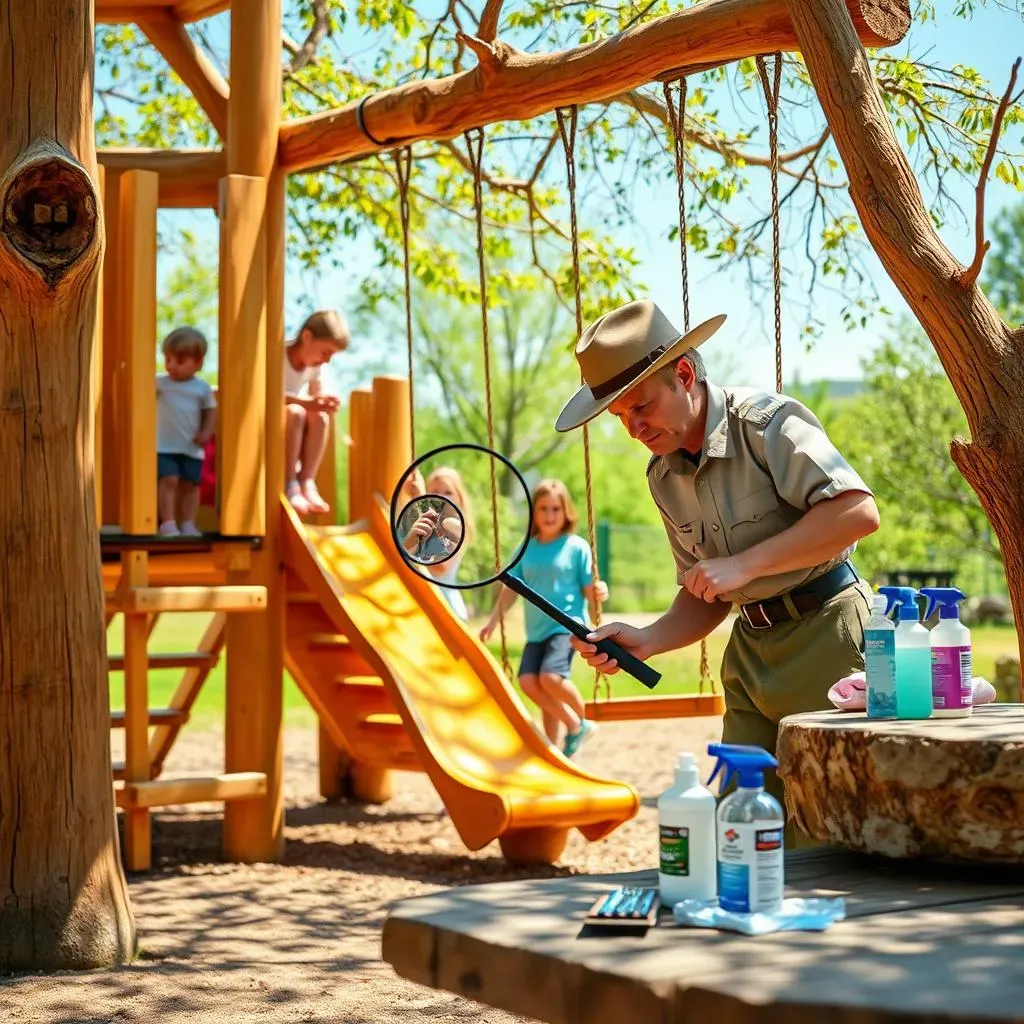Table of Contents
Imagine a world where playgrounds aren't just collections of plastic and metal, but vibrant, living spaces that spark imagination and connect children with nature. That's the power of natural outdoor playground equipment. These aren't your average swing sets and slides; they're carefully crafted environments designed to stimulate creativity, promote physical activity, and foster a love for the great outdoors. From sustainably sourced wood to innovative designs that mimic natural landscapes, natural playgrounds offer a unique and enriching play experience.
Why Choose Natural Outdoor Playground Equipment?

Why Choose Natural Outdoor Playground Equipment?
Embracing Holistic Development
Forget the sterile, cookie-cutter playgrounds of yesterday. Natural outdoor playground equipment offers a holistic approach to child development. It's not just about physical activity; it's about fostering creativity, problem-solving skills, and a deep connection with the environment. Think of a child clambering over a log jam, figuring out the best way to navigate the uneven terrain. That's problem-solving in action! Or imagine them building a fort in a willow tunnel, their imaginations running wild as they create their own little world. That's the magic of natural play.
Natural playgrounds encourage kids to move in different ways, challenging their balance, coordination, and strength. They also provide opportunities for social interaction, as children work together to build, explore, and create. It is a win-win for physical, cognitive, and social-emotional development.
Fostering a Connection with Nature
In our increasingly urbanized world, many children have limited opportunities to connect with nature. Natural outdoor playground equipment bridges this gap, bringing the beauty and wonder of the natural world into their play experiences. Natural playgrounds incorporate elements like trees, plants, rocks, and water, creating a sensory-rich environment that stimulates children's curiosity and encourages exploration. They learn about different textures, sounds, and smells, developing a deeper appreciation for the natural world.
Imagine a child discovering a ladybug crawling on a leaf or listening to the gentle rustling of leaves in the wind. These seemingly small moments can have a profound impact, fostering a sense of wonder and connection that lasts a lifetime. Plus, by exposing children to nature, we're also instilling in them a sense of environmental stewardship, encouraging them to protect and preserve our planet for future generations.
Sustainability and Durability
Choosing natural outdoor playground equipment is not only good for children; it's also good for the planet. Natural playgrounds are often built with sustainable materials, such as sustainably harvested wood, recycled materials, and locally sourced stone. This reduces the environmental impact of the playground and promotes responsible resource management. Plus, natural materials are often incredibly durable, able to withstand the rigors of outdoor play for many years to come. For example, Robinia wood, known for its exceptional strength and resistance to decay, is a popular choice for natural playground structures.
Investing in natural playground equipment is an investment in both the well-being of children and the health of our planet. It's a choice that reflects a commitment to sustainability, environmental responsibility, and a brighter future for all.
Benefits of Natural Playgrounds: A Quick Look
- Holistic Development: Promotes physical, cognitive, and social-emotional growth.
- Nature Connection: Fosters appreciation and understanding of the natural world.
- Sustainability: Uses eco-friendly materials and reduces environmental impact.
- Durability: Built to last with robust natural materials.
- Creativity and Imagination: Encourages open-ended play and imaginative scenarios.
Durable Materials for Natural Play: Robinia Wood and More

Durable Materials for Natural Play: Robinia Wood and More
The Wonder of Robinia Wood
When it comes to natural playground equipment, Robinia wood is a real superstar. This isn't your run-of-the-mill timber; Robinia is naturally durable, boasting an impressive resistance to rot and decay. This means it can withstand the elements and the wear and tear of energetic kids without needing harsh chemical treatments. Its unique, gnarled shape also adds a touch of natural beauty to any playground, making each piece of equipment one-of-a-kind.
Think of it like this: Robinia is the superhero of the playground world, strong, resilient, and ready to take on any challenge. Its natural durability translates to a longer lifespan for your playground equipment, saving you money and reducing the need for replacements down the line. Plus, its distinctive appearance adds character and charm, creating a play space that's both functional and visually appealing.
Beyond Robinia: Exploring Other Natural Options
While Robinia is a top choice, it's not the only option for durable natural playground materials. Other excellent choices include Black Locust, cedar, and redwood, all known for their natural resistance to decay and insect damage. Recycled materials, such as recycled plastic lumber, are also gaining popularity as a sustainable and long-lasting alternative. These materials offer a range of benefits, from reducing waste to providing a low-maintenance play surface.
Consider incorporating natural stone, sand, and water features into your playground design for added durability and sensory appeal. These elements not only withstand the elements but also provide endless opportunities for creative play. For example, a natural stone climbing wall can challenge children's physical abilities, while a sand pit can spark their imaginations as they build castles and create their own little worlds.
Material | Durability | Sustainability | Aesthetics |
|---|---|---|---|
Robinia Wood | High (naturally rot-resistant) | Sustainable if harvested responsibly | Unique, gnarled appearance |
Cedar | Moderate (naturally decay-resistant) | Sustainable if harvested responsibly | Warm color, pleasant aroma |
Recycled Plastic Lumber | Very High (resistant to rot and insects) | Highly Sustainable (reduces waste) | Various colors and textures |
Designing Inclusive Natural Outdoor Playgrounds for Everyone

Designing Inclusive Natural Outdoor Playgrounds for Everyone
Understanding Inclusive Design Principles
Creating truly inclusive natural outdoor playgrounds means moving beyond mere accessibility. It's about designing spaces that welcome and engage children of all abilities, fostering a sense of belonging and shared play. This involves considering a wide range of needs, from physical mobility to sensory sensitivities to cognitive differences. When designing for inclusivity, think about creating pathways that are wheelchair-accessible, incorporating sensory elements that stimulate different senses, and providing quiet areas where children can retreat if they feel overwhelmed.
Imagine a child with mobility challenges being able to navigate the entire playground independently, joining their friends in all the activities. Or a child with autism finding a calming space to regulate their senses before rejoining the group. That's the power of inclusive design – creating a play environment where every child feels valued, supported, and empowered to participate.
Incorporating Universal Design Elements
Universal design is a key principle in creating inclusive playgrounds. It focuses on designing features that are usable by everyone, regardless of their abilities. This can include things like ramps instead of stairs, wide pathways to accommodate wheelchairs and strollers, and play equipment with varying levels of challenge to suit different physical abilities. Sensory-rich elements, such as textured surfaces, musical instruments, and fragrant plants, can also enhance the play experience for children with sensory processing differences.
Consider incorporating features like accessible swings with supportive seats, raised sandboxes that can be reached from a wheelchair, and water play areas with adjustable heights. These elements not only make the playground more accessible but also create a more engaging and enriching experience for all children. By embracing universal design principles, we can create play spaces that are truly welcoming and inclusive for everyone.
Fostering Social Interaction and Understanding
Inclusive playgrounds are not just about physical accessibility; they're also about fostering social interaction and understanding between children of different abilities. Design features that encourage collaboration and cooperation, such as group swings, shared building areas, and inclusive games, can help children learn to play together and appreciate each other's unique strengths. Providing opportunities for children to interact with peers who have different abilities can also promote empathy, compassion, and a greater understanding of diversity.
Consider incorporating elements like storytelling circles, where children can share their experiences and perspectives, or collaborative art projects that encourage teamwork and creativity. These activities can help break down barriers and foster a sense of community among children of all abilities. By creating playgrounds that are both physically and socially inclusive, we can help children develop the skills and attitudes they need to thrive in a diverse and interconnected world.
Key Elements of Inclusive Playground Design:
- Accessible pathways and ramps
- Sensory-rich elements (textures, sounds, scents)
- Varying levels of challenge in play equipment
- Accessible swings and seating
- Raised sandboxes and water play areas
- Collaborative play features
- Quiet zones for sensory regulation
The Developmental Benefits of Natural Play Equipment

The Developmental Benefits of Natural Play Equipment
Boosting Physical Skills and Coordination
Natural playgrounds are a fantastic gym in disguise! The uneven surfaces, climbing structures, and natural obstacles challenge children's balance, coordination, and gross motor skills. Think about it: navigating a rocky path requires more precise foot placement than running on a flat surface. Climbing a tree strengthens muscles and improves coordination in a way that a plastic ladder simply can't match. These activities not only build physical strength but also enhance body awareness and spatial reasoning.
From crawling through tunnels to leaping over logs, natural play encourages a wide range of physical movements that contribute to overall fitness and well-being. It's a fun and engaging way for children to develop the physical skills they need to thrive, both on and off the playground. Plus, the open-ended nature of natural play allows children to challenge themselves at their own pace, building confidence and resilience along the way.
Igniting Creativity and Imagination
Unlike traditional playgrounds with their fixed structures and predetermined activities, natural playgrounds offer endless opportunities for creative exploration and imaginative play. A simple pile of rocks can become a castle, a spaceship, or anything else a child can dream up. A muddy puddle can transform into a magical potion or a dinosaur swamp. The possibilities are truly limitless!
Natural play encourages children to think outside the box, to problem-solve, and to create their own narratives. It fosters their imagination, their creativity, and their ability to see the world in new and exciting ways. Plus, by engaging in imaginative play, children develop essential social and emotional skills, such as empathy, communication, and cooperation. It's a powerful way to nurture their creativity and prepare them for success in a world that demands innovation and adaptability.
How Natural Playgrounds Boost Development:
- Physical Skills: Enhances balance, coordination, and gross motor skills.
- Creativity: Fosters imagination, problem-solving, and innovative thinking.
- Social-Emotional Skills: Promotes empathy, communication, and cooperation.
- Cognitive Development: Stimulates curiosity, exploration, and learning.
- Connection with Nature: Encourages appreciation and understanding of the natural world.
Maintaining and Caring for Your Natural Outdoor Playground Equipment

Maintaining and Caring for Your Natural Outdoor Playground Equipment
Regular Inspections: Your First Line of Defense
Just like a car needs regular check-ups, your natural outdoor playground equipment requires routine inspections to ensure its safety and longevity. Make it a habit to walk through the playground regularly, looking for signs of wear and tear, such as splinters, cracks, loose connections, or insect damage. Pay close attention to high-traffic areas and components that bear a lot of weight, like swings, slides, and climbing structures. Early detection of potential problems can prevent accidents and extend the lifespan of your equipment.
Don't underestimate the power of a simple visual inspection. A quick scan can reveal loose hardware, protruding nails, or areas where the wood is starting to rot. Address these issues promptly to prevent them from escalating into more significant problems. Consider creating a checklist to ensure that you cover all the key areas during your inspections. This will help you stay organized and consistent in your maintenance efforts.
Here's a quick checklist for your regular inspections:
- Check for splinters, cracks, and rot in wooden structures.
- Inspect all hardware for tightness and corrosion.
- Examine swings and slides for wear and tear.
- Look for signs of insect damage.
- Ensure that safety surfacing is in good condition.
Cleaning and Protecting Natural Materials
Natural materials like wood require special care to protect them from the elements and maintain their beauty. Regular cleaning can remove dirt, grime, and mildew, preventing them from damaging the wood's surface. Use a mild soap and water solution and a soft brush to gently scrub the wood, then rinse thoroughly. Avoid using harsh chemicals or abrasive cleaners, as they can damage the wood and harm the environment.
Consider applying a sealant or stain to protect the wood from moisture, UV rays, and insect damage. Choose a product that is specifically designed for outdoor use and is non-toxic and safe for children. Reapply the sealant or stain every few years, or as needed, to maintain its protective properties. Proper cleaning and protection can significantly extend the lifespan of your natural playground equipment and keep it looking its best.
Here's a table of cleaning and protecting natural materials
Material | Cleaning | Protection |
|---|---|---|
Robinia Wood | Mild soap and water, soft brush | Non-toxic sealant or stain |
Cedar | Mild soap and water, soft brush | Cedar oil or sealant |
Natural Stone | Hose down with water | Sealer to prevent staining |
Addressing Repairs and Replacements Promptly
Even with regular inspections and proper maintenance, natural playground equipment will eventually require repairs or replacements. Don't delay addressing these issues, as they can pose safety hazards and lead to further damage. Replace any damaged or worn-out components immediately, using high-quality materials that are compatible with the existing structure. Consult with a qualified professional if you're unsure about how to perform the repairs yourself.
When making repairs or replacements, consider using sustainable materials and practices whenever possible. This can include using reclaimed wood, recycled materials, or locally sourced stone. By making eco-friendly choices, you can minimize the environmental impact of your playground and promote sustainability. Remember, maintaining and caring for your natural outdoor playground equipment is an ongoing process. By investing in regular inspections, proper cleaning, and timely repairs, you can ensure that your playground remains a safe, fun, and enriching space for children to enjoy for many years to come.
Tips for Long-Term Care:
- Keep the playground area free of debris, such as leaves and branches.
- Trim back any vegetation that could interfere with play equipment.
- Ensure proper drainage to prevent water from pooling around structures.
- Consider installing a shade structure to protect equipment from the sun.
- Educate children and caregivers about proper playground use and care.
Embracing Nature's Playground: A Lasting Investment
Investing in natural outdoor playground equipment is more than just purchasing play structures; it's about creating a legacy of health, creativity, and environmental stewardship for future generations. By choosing sustainable materials like Robinia wood, prioritizing inclusive design, and understanding the developmental benefits of nature play, we can transform our playgrounds into dynamic spaces that nurture children's minds, bodies, and spirits. As we look ahead, let's continue to innovate and explore new ways to connect children with the natural world, ensuring that the joy and wonder of outdoor play remain accessible to all.